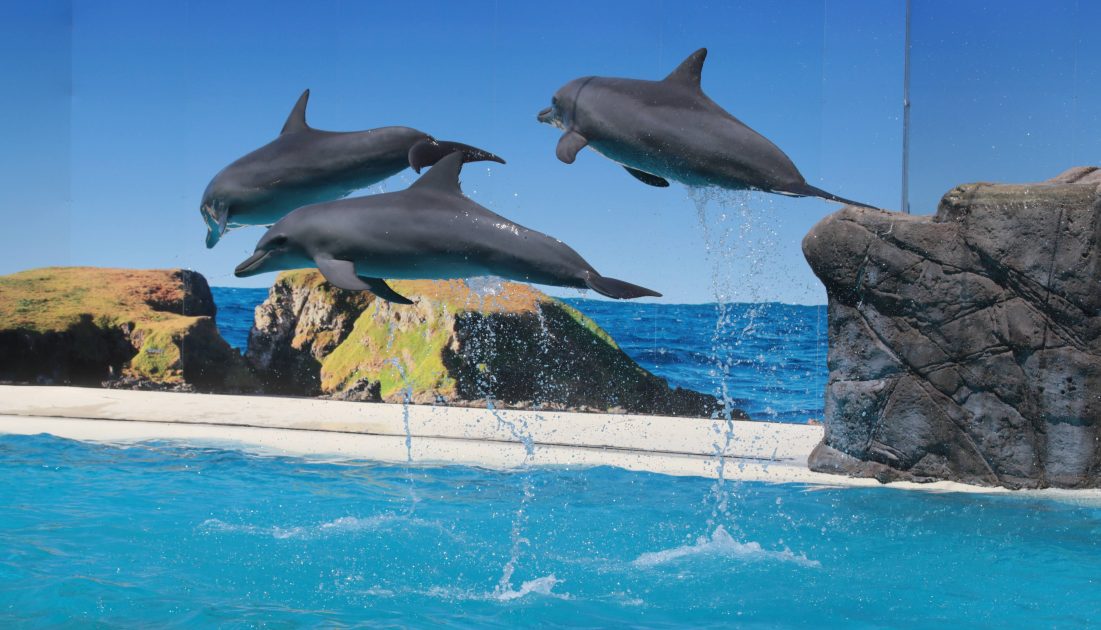In a striking turn of events, the Dolphin Marine Conservation Park and Dolphin Marine Rescue, located in Coffs Harbour, NSW, are currently facing a critical juncture, poised on the edge of closure without “urgent” and essential financial “support” from the NSW Government. For more than five decades, this esteemed marine park has stood as a sanctuary for marine animals and a source of delight for countless visitors. However, its future now hangs in uncertainty, as it grapples with an intricate web of challenging circumstances that have converged to create this perilous situation.
Terry Goodall, the Managing Director of the Marine Conservation Park, stated in an official release that he has sought financial assistance from local, state, and federal governments but has not received any support.
“By going public, we hope the government will see that we’re at serious risk of closing the marine conservation park and marine wildlife rescue facility and offer support to get us through this tough period,” Goodall said.
Closure of the park will see fifty employees lose their jobs, and hundreds of sea animals, including sea lions and dolphins in NSW, lose their “forever” homes in the sanctioned and accredited area.
The park, established in 1970, has been a cornerstone of marine wildlife rescue and rehabilitation in Australia, earning its reputation as a unique and vital facility on the NSW coast. Over the years, it has provided invaluable support to injured marine animals, including dolphins, sea lions, and turtles, across a vast stretch from Sydney to the Gold Coast. However, recent times have proven especially arduous for the park, as it grapples with a host of adversities.
The primary catalyst behind this financial turmoil is considered to be the global pandemic that has upended economies worldwide. The COVID-19 pandemic inflicted a severe blow to tourism and recreational activities, causing a sharp decline in visitor numbers at the park.
The consequent loss of revenue has been exacerbated by a series of natural disasters, such as floods and bushfires, that struck the region relentlessly. These disasters have not only impacted the park’s operations but have also taken a toll on the local community, affecting their discretionary spending on leisure activities like visiting the marine park.
Managing Director Terry Goodall’s efforts to secure financial assistance from the government have thus far been unsuccessful, leaving the park with no choice but to appoint voluntary administrators. This step aims to explore alternative financial and restructuring options, but it also signals the gravity of the situation and the urgency of external aid required to keep the park afloat.
The potential closure of the Dolphin Marine Conservation Park would have far-reaching consequences, extending beyond its immediate workforce and the local economy. With fifty employees facing the risk of unemployment, the social and economic impact on the community is evident. In addition, hundreds of marine animals stand to lose their “forever” homes, compounding the concern for wildlife welfare in the region.
The uniqueness of the park’s offerings underscores its value to the community and the broader conservation efforts. Being one of only two facilities in Australia that provide specialized care for injured dolphins, the loss of this facility would be deeply felt. Moreover, as the sole permanent and fully equipped rescue and rehabilitation center for sea lions and dolphins in NSW, its absence could leave a critical gap in the region’s marine wildlife conservation network.
To mitigate these challenges and rally support, the Dolphin Marine Conservation Park has embarked on a public fundraising campaign. Social media platforms, such as Facebook, have become instrumental in reaching out to a wider audience, urging supporters to contribute through a PayPal link.
“Consecutive natural disasters, including bushfires, floods, COVID-19 and more floods, have taken their toll on our organisation,” the page reads.
The outpouring of support from both individuals and businesses has been encouraging, emphasizing the emotional connection and the community’s desire to see the park endure.
“Every donation counts, and we’re incredibly grateful for the people and businesses that have already come forward and donated or offered support,” the statement reads further.
However, despite these efforts, the park’s path to recovery remains uncertain. The series of interest rate rises by the Reserve Bank of Australia has added further strain, impacting visitors’ discretionary spending and thus reducing park revenues. With economic uncertainties still looming, the need for sustainable financial support becomes all the more critical.
To sum up, the Dolphin Marine Conservation Park is now standing at a crossroads, its future hanging in the balance. The voluntary administration marks a pivotal moment, calling for innovative solutions and collective efforts to preserve this cherished marine sanctuary. As the community rallies around the park in its time of need, the hope for financial aid from the government and compassionate supporters becomes the lifeline that could rescue this iconic institution and secure its vital role in marine wildlife conservation for years to come.







